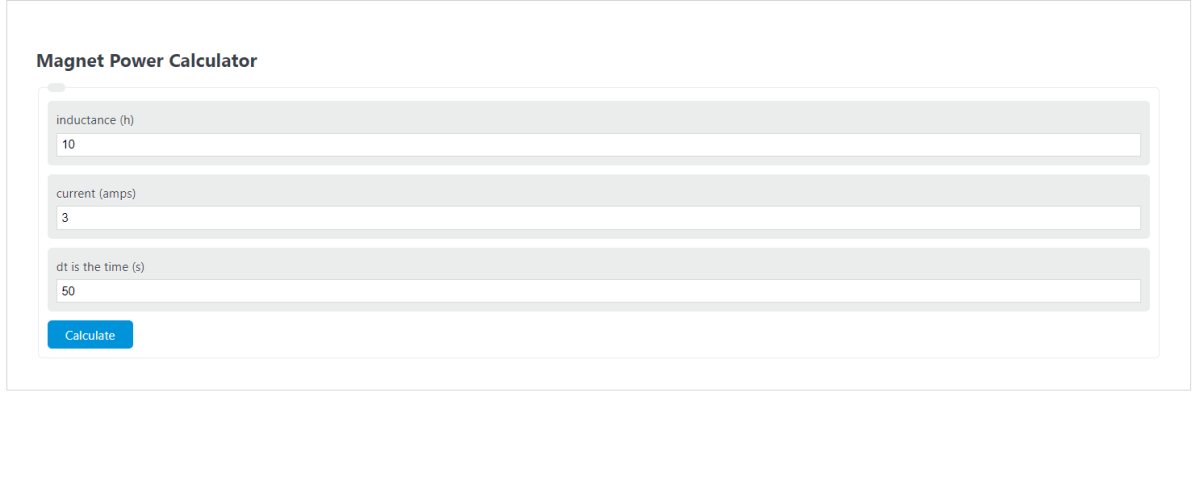Enter the inductance (h), the current (amps), and the time (s) into the calculator to determine the Magnet Power.
- All Electrical Calculators
- Magnetic Energy Calculator
- Magnetic Reluctance Calculator
- Magnetomotive Force Calculator
Magnet Power Formula
The following formula is used to calculate the Magnet Power.
Pm = 1/2 * L * I^2 / dt
- Where Pm is the Magnet Power (watts)
- L is the inductance (h)
- I is the current (amps)
- dt is the time (s)
To calculate the magnet power, multiply the inductance by the current square, then divide by the 2 times the time.
How to Calculate Magnet Power?
The following example problems outline how to calculate Magnet Power.
Example Problem #1
- First, determine the inductance (h). In this example, the inductance (h) is determined to be 10 .
- Next, determine the current (amps). For this problem, the current (amps) is measured to be 3 .
- Next, determine the time (s). In this case, the time (s) is found to be 50.
- Finally, calculate the Magnet Power using the formula above:
Pm = 1/2 * L * I^2 / dt
Inserting the values from above and solving yields:
Pm = 1/2 * 10 * 3^2 / 50 = .9 (watts)
FAQ
What is inductance and how does it affect magnet power?
Inductance, denoted as ‘L’ and measured in henries (h), is a property of an electrical conductor by which a change in current flowing through it induces an electromotive force (voltage) in both the conductor itself (self-inductance) and in any nearby conductors (mutual inductance). In the context of magnet power, higher inductance allows for the generation of more power under the same conditions of current and time, as it directly multiplies with the squared current in the magnet power formula.
How does the time factor (dt) influence the calculation of magnet power?
The time factor, denoted as ‘dt’ and measured in seconds (s), represents the duration over which the current change occurs. In the formula for calculating magnet power, the time factor inversely affects the power output. This means that for a given inductance and current, a shorter time duration (dt) will result in higher magnet power, as the power is inversely proportional to the time over which the current changes.
Can magnet power be negative, and what would that signify?
In the context of the given formula, magnet power (Pm) is calculated based on absolute values of inductance, current, and time, and as such, the result is typically positive, representing the rate at which energy is either stored in or released from the magnetic field. However, a negative value in theoretical scenarios could imply a situation where energy is being extracted from the magnetic field, rather than being stored or dissipated. In practical terms, magnet power is generally considered as a positive value indicating the energy contribution to the system.
